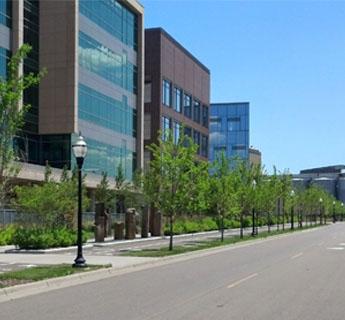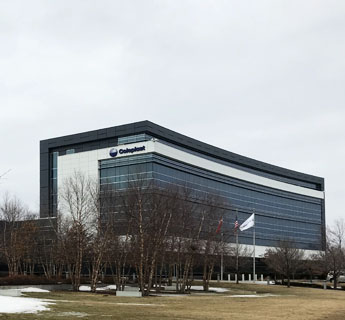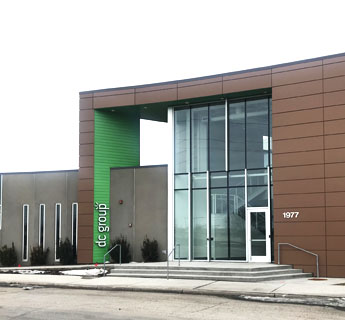Production and Processing: Expand and maintain areas for production, processing, and distribution of products, services, and ideas.



A healthy local and regional economy requires space for production and processing businesses. Examples of these types of businesses include, but are not limited to, medical device and electronic instrument manufacturing, breweries and distilleries, food production, metal fabrication, and distribution and fulfillment. Production and processing businesses provide economic opportunities for people without a college degree by offering higher wages than comparable jobs in the retail, accommodation, and food service industries. In Minneapolis, less than half of the Black, American Indian, and Hispanic population has more than a high school education, compared to 83 percent of White, non-Hispanic residents. These educational disparities create barriers for finding employment opportunities that pay a living wage. Production and processing businesses in the region have average monthly starting wages for workers of color that are twice as high as retail businesses and nearly 2.5 times that of accommodation and food service businesses.
While this plan calls for improving for the City’s residents as a strategy for improving economic standing, the City should also continue to set aside space for production and processing businesses to ensure that living-wage jobs in industries with minimal environmental impacts will be available to Minneapolis residents, especially people of color, indigenous people, and those without a college degree. If the City is to achieve the goals of eliminate disparities and living-wage jobs through the location and establishment of production and processing businesses, it is a prerequisite that lands for these uses be protected from the encroachment of other land uses, particularly housing, that outbid jobs-producing uses for land. To achieve this outcome the Future Land Use map designates Production and Processing Areas that are well-suited to support production and processing businesses, specifically excluding housing and other non-production uses.
Some areas that have been historically industrial are not well-suited to support new production and processing businesses because the existing building stock does not meet the needs of modern production businesses, and they lack the contiguous land to make substantial redevelopment feasible. This plan designates such areas as Mixed Use Production Areas, allowing both production and non-production uses to co-exist.
 ACTION STEPS
ACTION STEPS
The City will seek to accomplish the following action steps to expand and maintain areas for production, processing, and distribution of products, services, and ideas.
- Designate Production and Processing Areas that comprise large contiguous tracts of land historically used for industrial purposes, that are well-served by transportation infrastructure for both people and freight, and that contain building stock suitable for production and processing businesses to expand access to higher wage job opportunities.
- Prioritize use of land in Production and Processing Areas for production, processing and last mile distribution of products and services uses that have minimal or no air, water, or noise pollution impacts, and that provide quality living-wage jobs.
- Identify and limit uses in Production and Processing Areas that do not provide a high concentration of high quality, low-impact production and processing jobs.
- Encourage infill development on underdeveloped properties in Production and Processing areas.
- Designate Production Mixed Use Areas in parts of the city that have been historically industrial, but that are not substantial opportunities for locating and growing low-impact production, processing, and distribution businesses.
- Allow both production and non-production land uses in Production Mixed Use Areas.
- Establish land use regulations to encourage the adaptive reuse of older industrial and commercial property in Production Mixed Use areas, including reuse that results in a change to non-production uses.
- Improve transit, bicycle and pedestrian access to areas of employment, including Production and Processing Areas and Production Mixed Use Areas.
- Develop guidance for future development in Production and Processing Areas and Production Mixed Use Areas served by regional transit lines in order to ensure a minimum level of development and job intensities.
- Allow production and processing uses in Commercial Mixed Use areas while controlling for potential negative externalities through building and site design.
- Accommodate facilities needed for municipal operations in both Production and Distribution Areas and Production Mixed Use Areas.
- Identify and limit new heavy industrial uses that harm human health or the environment throughout the city.
- Continue and expand incentives and technical assistance to existing production and processing businesses to leverage investments in cleaner, safer, more energy efficient and sustainable technology in order to reduce pollution.
- Enforce regulations related to pollution and nuisance ordinances.
- Focus business assistance for targeted low-impact industries that offer new opportunities for historically unemployed and underemployed residents.
- Promote business investment and expansion through site assembly, clearance and redevelopment in strategic areas.
- Develop detailed planning guidance for Production Mixed Use areas, particularly those experiencing rapid growth and change, to better define the future of commercial and production space in those locations.
- Prohibit schools except training centers that require facilities zoned for production and processing from being built in Production and Processing areas.

